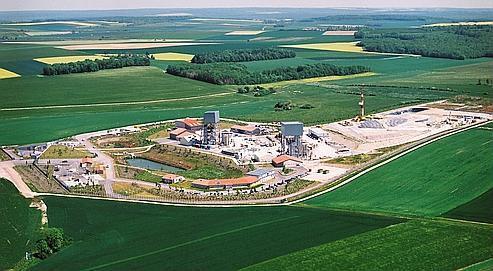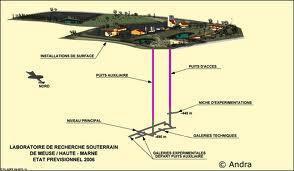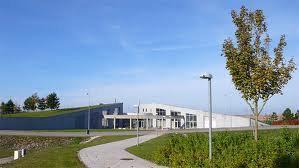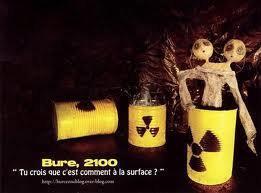Meuse/Haute Marne Underground Research Laboratory
Near the French village Bure in the Meuse in France is operated at a depth of about 500 m, a underground laboratory for the study of local geological conditions by the French nuclear waste authority ANDRA ( Agence Nationale pour la Gestion des Déchets radioactifs ). The planned in the neighboring department of Haute- Marne repository for radioactive waste called Cigéo (Centre industriel de stockage géologique pour les déchets HA et MA -VL, dt reversible deep geological repository for radioactive waste in the departments of Meuse and Haute -Marne ) is located an underground tunnel system with an area of 30 square kilometers.
Purpose
The background to this measure is the French national search for a storage facility for high - (HAW ) and long-lived intermediate-level ( MAW ) radioactive waste. A corresponding atomic repository, there are to date not in the country; Bure would also be the first such result in the whole of Europe; the nuclear waste should be stored here up to 100,000 years.
In the case of the suitability of the research laboratory to be developed into a repository. This capacitance can be designed for approximately 130,000 m³ and 8,000 m³ of medium - high-level radioactive waste by the current state. The French government stressed that the disposal of radioactive waste for a not yet specified period of time ( 300 years are suggested ) would be made retrievable.
Development
The first drilling was conducted in 1994.
On 9 December 1998 the French Government decided to build two underground labs in order to create there through research activities, the scientific requirements for the operation of a nuclear repository. As one of the sites selected in this context Bure, since the local, about 130 meters thick clay and marl formation of relatively fine-grained sedimentary rock appeared to be suitable; this should also be examined in general the suitability of argillaceous rocks for the disposal of high level radioactive waste.
In September 2000 has started with the construction of two access shafts for the laboratory in Bure. The work was for a fatal accident in May 2002, interrupted for almost one year.
By the end of 2011 is a model "mini- repository " emerged; 2013 held a national public debate on the establishment of permanent nuclear waste. 2017 is scheduled to start.
With the storage of high-level radioactive waste could be initiated by the appropriate planning in 2025; According to initial findings, a storage for a million years is here thought possible, according to ANDRA proposes the installation of a nuclear waste repository before, the costs should be (2011 ) amount to 35 billion euros; been about 1.5 billion euros were invested, an application is to be made in 2015.
In view of 330 employees and the participation of so far over 2,000 international scientists tracked the ANDRA officially called a strategy of openness; annually currently attending (2011 ), about 2,000 visitors the pilot plant.
After initial payments by the French Government to the two departments concerned in the amount of € nine million, this sum is annually increased year by 2012 to 30 million; French power company Electricité de France (EdF ) moved his archive after Bure in a new building. The nearby village Bonnet receives for each of the 500 200 inhabitants per year € from a " fund for financial monitoring ."










